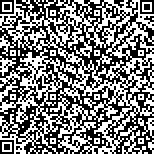| 本文已被:浏览 5787次 下载 1654次 |

码上扫一扫! |
|
|
| “嫦娥4号”任务有效载荷系统设计与实现 |
|
薛长斌1, 周晴1,2, 王雷1, 耿浩1, 刘鹏1, 朱重阳1, 张文璋1, 徐欣锋1, 李俊1
|
|
1.中国科学院 国家空间科学中心, 北京 100190;2.北京理工大学, 北京 100081
|
|
| 摘要: |
| “嫦娥4号”任务将首次实现人类在月球背面软着陆。通过分析任务特点,以多类型有效载荷配置为背景,介绍了以科学目标和探测任务为核心的有效载荷系统设计思路和实现方法。同时针对首次在深空探测领域搭载国际合作有效载荷项目情况进行了说明。“嫦娥4号”任务最重要的科学目标是利用月球背面洁净的电磁环境进行天文低频射电观测,因此分别在着陆器和中继星上新增配置了国内新研制的低频射电频谱仪及荷兰研制的低频探测仪。科学探测的太阳爆发产生的低频电场信号极其微弱,如何消除着陆器和中继星上其他电子设备发射的近场噪声对远场探测信号的干扰就成了本次任务的最大难点。在相关研制单位的多方努力下,通过优化接收天线设计和地面数据处理算法等多种手段,实现了低频探测信号不低于30 dB的噪声抑制性能,具备了实现科学目标的能力。 |
| 关键词: 月球与深空探测 有效载荷 月球背面 低频探测 国际合作 |
| DOI:10.15982/j.issn.2095-7777.2017.06.003 |
| 分类号: |
| 基金项目: |
|
| Design and Implementation of Payload System in Chang'e-4 Mission |
|
XUE Changbin1, ZHOU Qing1,2, WANG Lei1, GENG Hao1, LIU Peng1, ZHU Chongyang1, ZHANG Wenzhang1, XU Xinfeng1, LI Jun1
|
|
1.National Space Science Center, Chinese Academy of Sciences, Beijing 100190, China;2.Beijing Institute of Technology, Beijing 100081, China
|
| Abstract: |
| Chinese Chang'e-4 probe will become the first man-made spacecraft to soft land on the far side of the Moon. The spacecraft is equipped with diverse scientific payloads. The Chang'e-4 mission is analyzed, the design and implementation methods to meet the scientific objectives and exploration mission is introduced. Meanwhile, the first international cooperated scientific payload program in Chinese deep space exploration is also introduced. One of the highlighted scientific objectives of Chang'e-4 mission is low frequency radio exploration in the clean electromagnetic environment on the far side of the Moon by a Chinese very low frequency radio spectrometer(VLFRS) and a Netherlands-China long-wavelength explorer(NCLE), configured on the lander and the relay satellite separately. Because Solar low frequency electric field signal is extremely weak, how to eliminate the near field noise emission from electronic equipment on the spacecraft is the main problem of this task. The noise rejection of not less than 30 dB is realized by optimizing the receiving antennas design and data processing algorithms on the ground, which can fulfill the scientific task. |
| Key words: lunar and deep space exploration payload far side of the Moon low frequency radio exploration international cooperation |